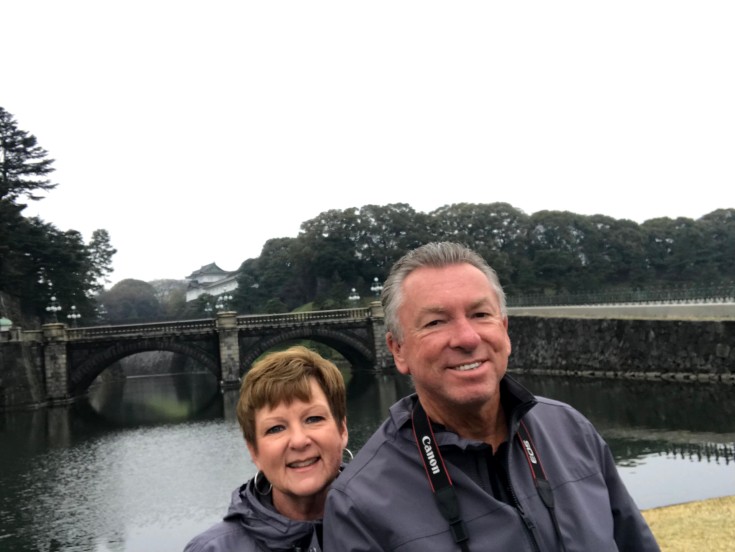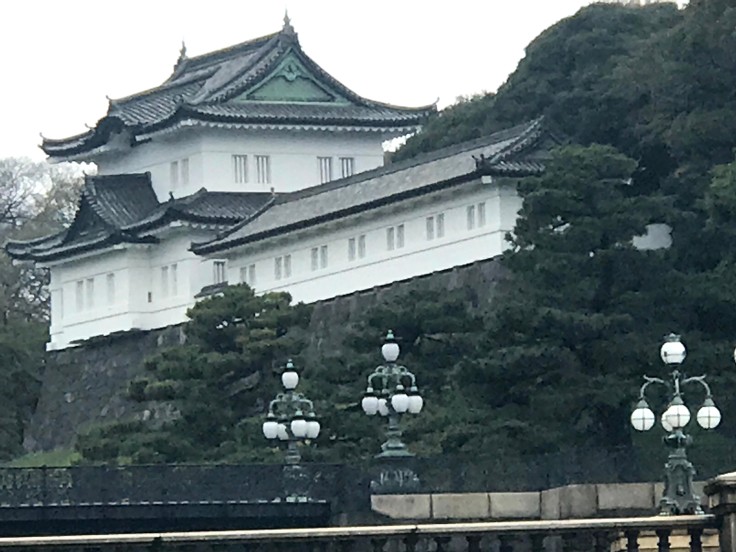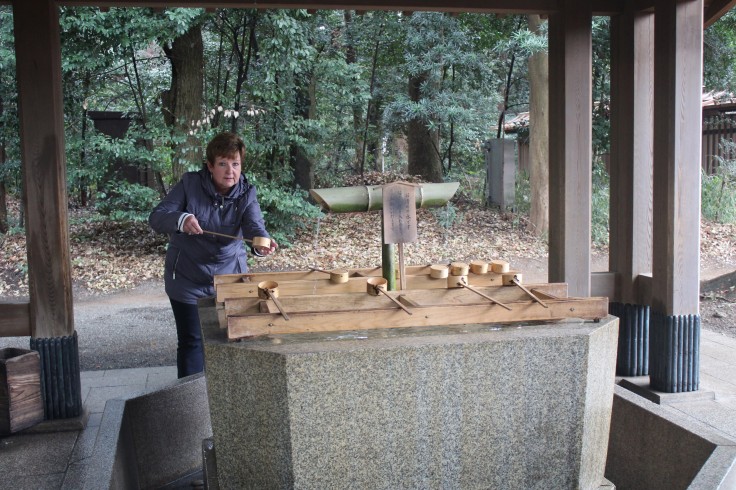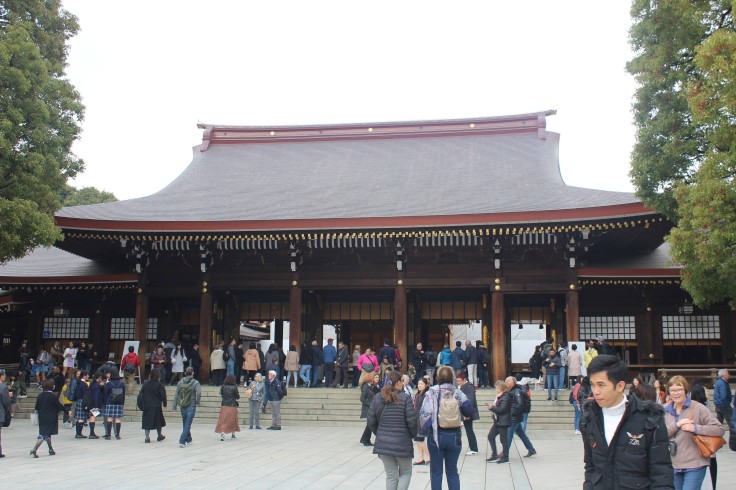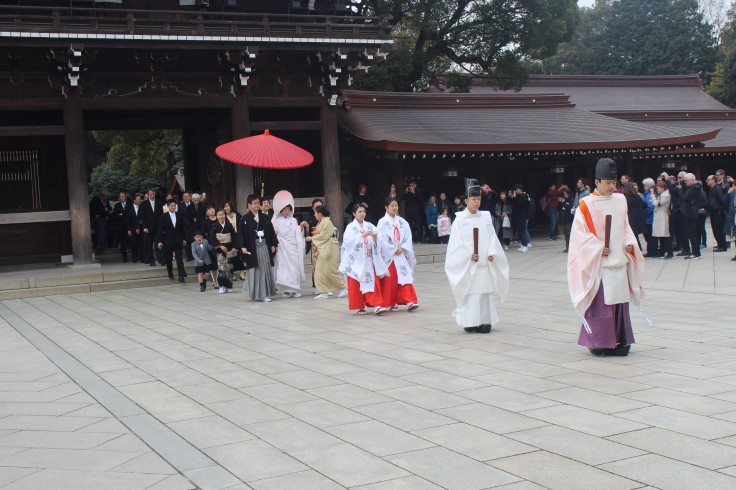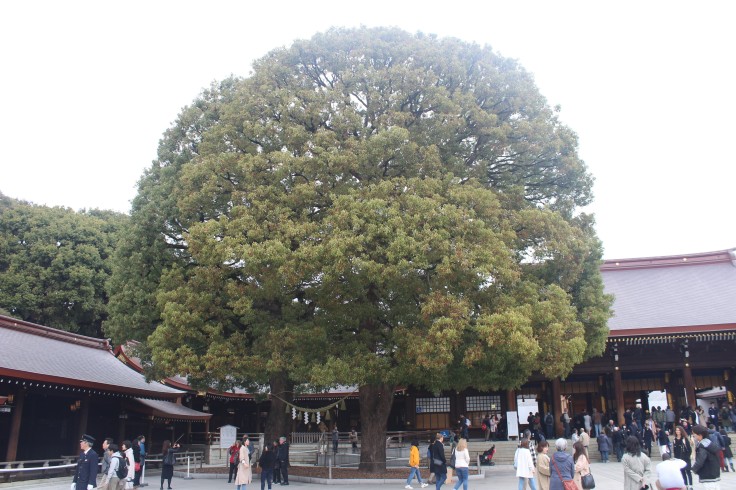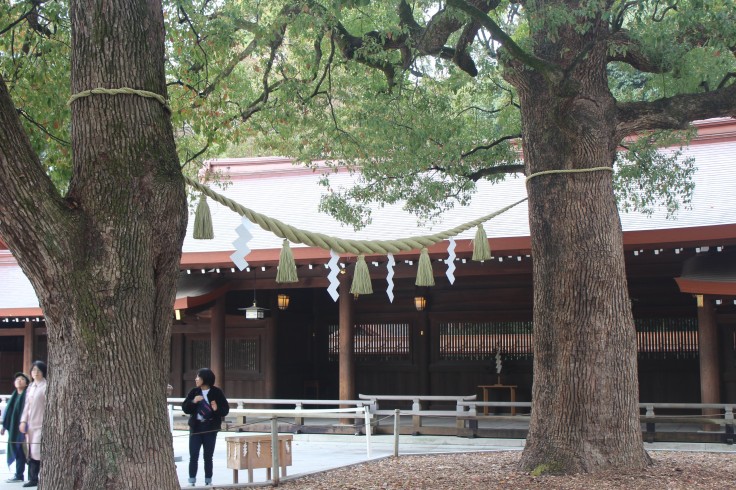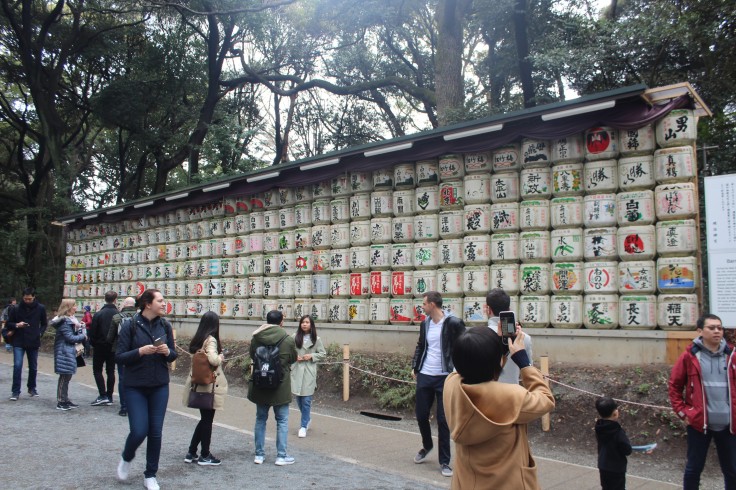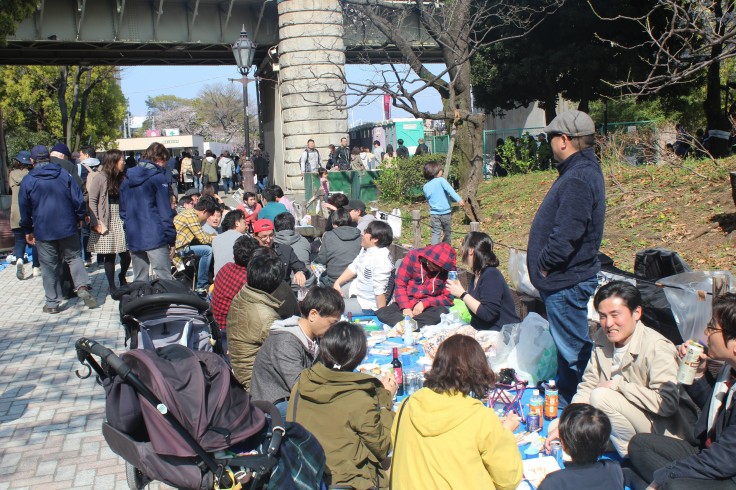Tokyo is the world’s most populous metropolitan area. The most recent census puts the metropolitan population at 13 million people, and at least 2 million of them were there to welcome us during our visit today. We have never seen so many people continually in one place. It was like being in a non-stop Seattle Seahawks crowd exiting the stadium times ten with no breaks. It was crazy!
We began our day at the Imperial Palace. A famous local Shogun defeated a rival Shogun in a village far away. To celebrate his victory and demonstrate his power the winning Shogun tore down the defeated Shogun’s home and brought the stones to Tokyo one by one and incorporated them into this palace. Although it is built on the Imperial grounds, it was never intended to be a residence. The Emperor lives in a home in the trees behind the Palace, as do his two adult sons. The palace is used by the Emperor for entertaining and for special ceremonies. The Palace is surrounded by a large wall and moat, just like a castle, and those invited to visit the Emperor enter here and make a long journey to get to his actual home. They enter using the bridge in the front of the photo, walk through the archway to the left of the picture of the bridge, then make a right and continue onto the metal bridge directly behind the first bridge (you can see it if you look closely) and follow that bridge into the woods on to the Emperor’s home. Quite the journey. Commoners are allowed to access the bridges twice a year, when they can stand at the end of the bridge and wave to the Emperor- once on the Emperor’s birthday, and on the first day of a new year. Similar to the Queen of England, an emperor has no political power. It is the Prime Minister who actually leads the country, but the Emperor is a treasured figure head and deeply respected.
We were here during Tokyo’s Cherry Blossom festival. The trees have special significance for the Japanese, signifying new beginnings. People come from miles away to view the trees. One of the favorite viewing sites is on the grounds of the Imperial Palace – the festival is the only time commoners can access the grounds – and they will wait in line forever and walk three miles one way to see them. Around the city they stake out space under the trees with blankets (much like Americans do with lawn chairs for parades) for Cherry Blossom “parties” of their own, little picnics with friends and family.
Next up was a visit to a Shento shrine. Before entering we had to cleanse ourselves with water from a special station, washing first our right hand and then our left, then rinsing our mouth to cleanse our spirit. We were privileged to witness a wedding in progress while we were at the shrine. The big white head dress the bride is wearing is to hide her horns, because everyone knows that when a woman gets angry she grows horns out of her head and we wouldn’t want those to show on her wedding day! The shrine had all of the features of those that we have visited before – three golden crests representing the family crest of the emperor to whom the shrine is dedicated, decorated sake barrels, beautiful buildings. This particula shrine also has ropes made of rice. The ropes are adorned with paper lightening bolts. The rope is tied between two Camphor trees. The lightening bolts represent rain, and tying them to the rice rope represents a prayer for good harvest. Tying them between the two trees represents unity, and newlyweds traditionally have their picture taken here for good luck in their marriage.
We finished the afternoon up by visiting another temple and outdoor market, where we were joined by 2 million of our closest friends.



